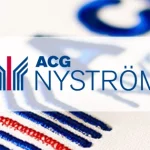 The World Bank has warned that there could be a more severe global crisis than that of 2008 due to a a very likely slump in global economic growth and has called for preparations to bear the possible shocks in the near future. There is already recession in Europe and a visible slowdown in India, Brazil, and China other developing economies. The rising oil prices will worsen the global financial scenario further. The Indian textile sector, among others, is under acute pressure forcing the government to work out a debt restructuring program for most of the players who borrowed money to modernize and/or expand expecting a boom in demand. The slowdown in the US economy and the debt crisis in Europe have taken a heavy toll and the industry continues to feel the heat.The financial crisis has further changed the rules of the market and new challenges have emerged for every one in the supply chain. The customers demand new products at short notice making the demand and supply both unpredictable. On top of these uncertainties and new challenges are being faced by businesses due to increasing input costs including those of raw materials and labour. The markets are demanding innovations in much shorter intervals and at much lower cost. For example, it is reported that in circular knitting, the trend is to go for very fine gauges, higher speed and higher productivity. The standard requirement for a single jersey T-shirt used to be 180g/qm but today, the standard is 125g/qm, and in the future it is expected to be 80-90g/qm. Accordingly, the machinery requirement is affected. Then there is a severe shortage of skilled workers in most of the production centres, globally. The low wage cost advantage is fast disappearing even from countries like China and India. Producers have started shifting their base to lower cost countries because they are unable to compete with the prices if they continue to employ labour demanding higher wages.
The World Bank has warned that there could be a more severe global crisis than that of 2008 due to a a very likely slump in global economic growth and has called for preparations to bear the possible shocks in the near future. There is already recession in Europe and a visible slowdown in India, Brazil, and China other developing economies. The rising oil prices will worsen the global financial scenario further. The Indian textile sector, among others, is under acute pressure forcing the government to work out a debt restructuring program for most of the players who borrowed money to modernize and/or expand expecting a boom in demand. The slowdown in the US economy and the debt crisis in Europe have taken a heavy toll and the industry continues to feel the heat.The financial crisis has further changed the rules of the market and new challenges have emerged for every one in the supply chain. The customers demand new products at short notice making the demand and supply both unpredictable. On top of these uncertainties and new challenges are being faced by businesses due to increasing input costs including those of raw materials and labour. The markets are demanding innovations in much shorter intervals and at much lower cost. For example, it is reported that in circular knitting, the trend is to go for very fine gauges, higher speed and higher productivity. The standard requirement for a single jersey T-shirt used to be 180g/qm but today, the standard is 125g/qm, and in the future it is expected to be 80-90g/qm. Accordingly, the machinery requirement is affected. Then there is a severe shortage of skilled workers in most of the production centres, globally. The low wage cost advantage is fast disappearing even from countries like China and India. Producers have started shifting their base to lower cost countries because they are unable to compete with the prices if they continue to employ labour demanding higher wages.
China – considered to be the global factory – is now facing problems of labor shortages and higher wages. The clothier of the world seems to have exhausted all its low-wage labor. China’s performance as a global supplier is expected to worsen in coming years. The Indian scenario also looks similar causing further concern. The obvious way to overcome this problem is to go for value added products. India, at the moment, is rightly considering advancing in the field of technical textiles. But so far, it seems that that people are more interested in getting licenses than really going for the production of really high end technical textiles after receiving funding from the TUFS. The MoT has registered more than 500 units who want to go for technical textiles. The registration helps them to get funding under the TUFS but only time will tell how many units actually start making technical textiles and to what degree they can be called ‘technical’.
According to the global textile machinery manufacturers, one of the cost effective ways to beat the shortage of skilled labour and their increasing cost is to go for more and more automation. They are concentrating on making available very high speed machines with greater versatility in terms of products mix and production volumes thereby increasing the users’ competitiveness. Textile and clothing Producers will have to work hand in hand with their suppliers to find ways and means to overcome the new challenges emerging from fast changing and fluctuating market demand as well as to remain profitable. The future belongs to those who are innovative, engaged in special product range, use cutting edge technology, and firmly believe in providing their customers a first-class, reproducible product quality at a well-balanced cost. They will have to embed these features along with the business ethics in their company’s charter and follow it religiously.





